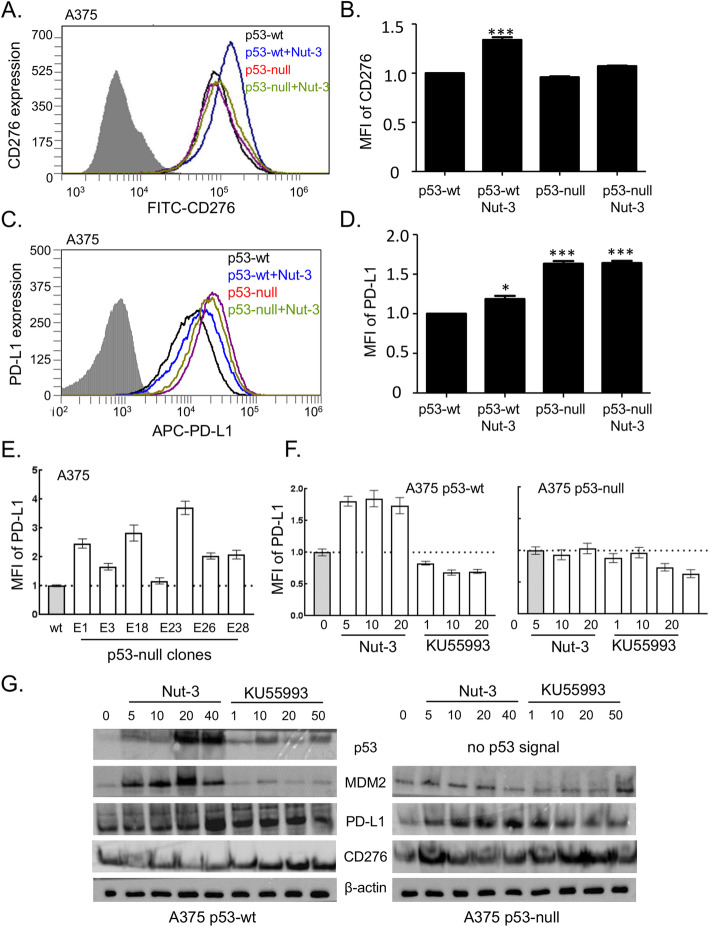Fig. 4.
Nutlin-3 induces CD276 and PD-L1 on the surface of melanoma A375 cells. Representative flow cytometry profiles and quantitation of cell surface CD276 (a, b) and PD-L1 (c, d) on A375 p53-wt and p53-null cells treated with DMSO or 10 μM Nutlin-3 for 24 h. CD276 and PD-L1 were measured using a FITC- and c APC-conjugated antibody, respectively. In a and c the grey areas correspond to an isotype antibody as a negative control. In b and d, results represent the mean ± SD of technical triplicates, each with 30,000 counted cells. Statistical analysis was performed by one-way ANOVA with Bonferroni post hoc test, *p < 0.05, ***p < 0.001. e Measurement of PD-L1 basal level A375 p53-wt (wt) and in single cell-p53 gene edited clones (Supplementary Fig. 1). The data are plotted as the mean fluorescent intensity (MFI) of PD-L1 for individual clones. f The effect of the ATM inhibitory molecule KU55993 and Nutlin-3 (Nut-3) on cell surface PD-L1. A375 p53-wt and A375 p53-null cells were incubated with KU55993 or Nutlin-3 at the indicated concentrations (μM) for 24 h. Western blot of lysates prepared from g A375 p53-wt and h A375 p53-null cells treated with indicated concentrations of Nutlin-3 (Nut-3) and KU55993. MDM2, p53, CD276, PD-L1 and β-actin have apparent molecular weights of 90, 50, 60, 50 and 42 kDa, respectively

